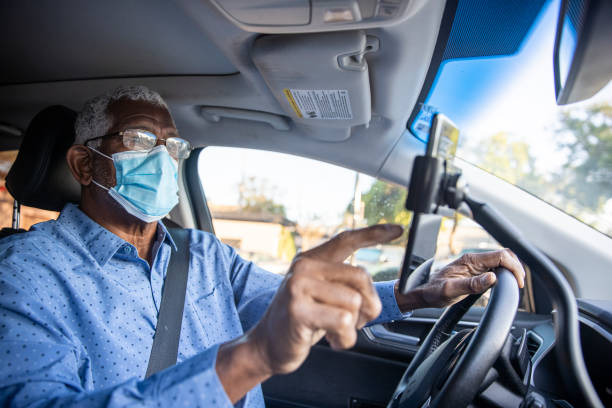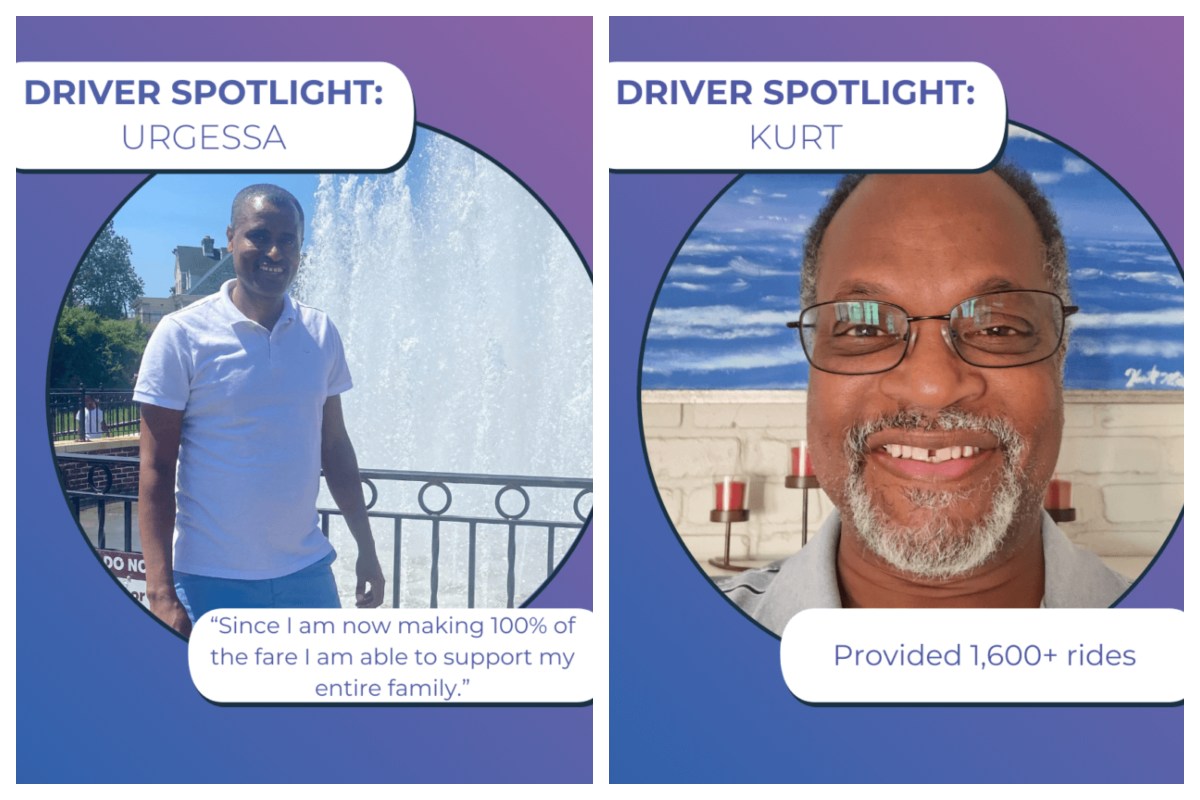Gig workers fight for their American dream
People who work in the gig economy – overwhelmingly immigrants – earn as little as $7 per hour.
 Representative Image. / iStock photo
Representative Image. / iStock photo
Mohammed was the director of transportation in the government of President Hamid Karzai in Kabul, Afghanistan. Now, he is a rideshare driver in Washington DC driving to make a living for his two elementary school-going daughters and son.
He is one of “1.3 million drivers in California and about 10 million nationwide”, who drive passengers or deliver meals full time. They form 90 percent of all gig workers, said Dr Michael Reich, professor of economics and chair of the Center on Wage and Employment Dynamics at the Institute for Research on Labor and Employment at the University of California, Berkeley. Dr Reich was speaking at the Ethnic Media Services briefing held on June.21.
Rideshare and delivery drivers are classified as contractors and not eligible for employee benefits like workers' compensation, etc. Algorithms designed to make the company profitable rob from the driver's share of the revenue explained Dr Reich.
Their American dream is in the hands of the app companies.
The drivers are paid very poorly. Why is that?
Rideshare and delivery drivers are predominantly recent immigrants, said Reich. “Their family income is much lower than average. They are more likely to be on food stamps and Medicaid than other workers.”
The drivers are treated by the companies as independent contractors and not employees, so they're not protected by minimum wage laws. They don't get unemployment insurance. They don't get workers compensation for injuries on the job. They are not paid for meals and rest breaks. The drivers are paid for only the time they drive a passenger and not during waiting time. “The drivers spend about 30 percent of their shift time waiting for the next ride that includes the time spent waiting in an airport or driving back from an outlying area back to an airport or downtown. So that's the time the drivers will not be paid.”
Even though the drivers have to come back to where the rides are going to be in order to be available for rides on short notice, during this time they're not getting paid, said Dr Reich.
Moreover, the drivers provide the vehicles in which they transport passengers or meals. Many of them purchase that vehicle and have lease finance costs as well as purchase costs. “They drive 10,000 to 40,000 miles a year, which puts a lot of wear and tear on a car. It means that the car is going to have to be replaced every few years,” said Reich. Companies do not reimburse drivers for the wear and tear on their cars.
“They basically view the drivers like the side-hustle drivers,” said Reich. The assumption is that the driver already has a car and with a little bit of fuel cost they can make money. However, the actual cost to the driver, when you count the wear and tear and the need to replace the vehicle, adds up. “When you put all that together, it eats up about half of the driver’s gross revenue. While companies say they are paying the drivers $30 an hour or more, in fact, as per my studies, the drivers average much less than the local minimum wage.”
In states like California and Massachusetts, which are high-wage states where the minimum wage is $15 or $16 statewide, the drivers get only about $11 or $12 an hour.
How do the companies get away with this?
The companies are able to get away with this. One reason, says Dr Reich, is that many of the drivers, especially immigrants, lack the skills or connections to get better jobs. They're kind of a captive labor force. Companies also now use algorithms to determine which drivers will accept low-model pay offers for a ride. The companies have individualized pay and are making more ride offers to those who are most desperate.
“It used to be the case that the driver wouldn't even know ahead of time how much they could get paid for the ride and were then penalized for turning down too many rides. It's called deactivation. Now, the companies use algorithms to test what a driver will accept, maybe just $4 for going to some remote place for example. They pit the drivers against each other in a race to the bottom for wages.
Ride-hailing app Uber has admitted to using workers’ “behavioral patterns” to determine their pay. Drivers and their unions have accused the company of using its dynamic algorithm in combination with upfront pricing to gradually reduce their pay, arguing that more transparency is needed to protect them from the negative effects of algorithmic surveillance and automated decision-making.
The Gig Workers Rising organization demands ‘Activate Respect’ fighting what they call unfair driver “deactivations.” It’s one of the latest campaigns by gig workers to demand better treatment, benefits, pay and protections from the giant companies running these markets. The companies have pushed controversial legislation to avoid spending more on employee overhead.
 Drivers who run their own business on the Empower software. / Empower
Drivers who run their own business on the Empower software. / EmpowerBallot measures step up to protect rideshare providers
In recent years, states and cities who have attempted to pass legislation regarding the growing “gig economy”, have met with fierce opposition from the ride share app companies.
In California, Proposition 22 was a ballot initiative led by app-based companies such as Uber, Lyft, and DoorDash to exclude ride-share and food-delivery app-based workers from nearly all employee rights under state law. A clause in the initiative declared gig workers independent contractors not eligible for workers’ comp and other benefits. The rideshare companies spent a whopping $224 million on Prop 22 and won. It went on to become law. And, worst of all, Prop 22 could only be amended by a seven-eighths vote of the state legislature, making its provisions virtually impossible to repeal or change compensation benefits, overtime, health care, etc. The California Supreme Court is considering the constitutionality of Prop 22.
Minneapolis proposed ordinance mandated at least $1.40 per mile and $0.51 per minute within Minneapolis be paid to drivers. Uber and Lyft threatened to stop services in the state. “If this bill were to pass, we would unfortunately have no choice but to greatly reduce service, and possibly shut down operations entirely,” Uber threatened.
Massachusetts' attorney general took Uber Technologies and Lyft to trial over allegations that the ride-share companies are misclassifying thousands of drivers in the state as independent contractors to avoid treating them as more costly employees.
“New York City and Seattle did successfully scale up to be equivalent to the local minimum wage paying for all the time the drivers work and for all their expenses. In both cities, the higher pay per trip did benefit the drivers. It did not adversely affect industry,” said Dr Reich.
Empower allows drivers to run their own business
Uber and Lyft have new technology companies nipping at their heels. Empower is a software-as-a-service platform that drivers pay a monthly fee to use. Drivers get 100 percent of their riders’ fare.
“In exchange, drivers pay Empower a subscription fee, which is significantly less than Uber/Lyft are withholding from drivers in taking over 40 percent of the fare on average from each ride,” the company said on its website. “Empower takes ZERO commission from rides.”
“Using Empower software and support services, drivers have provided over 5,000,000 rides to over 200,225 riders in the DC metro area. They have earned over $90,000,000” said Empower CEO Joshua Sear.
“There are a couple of things to like about Empower. You pay a flat fee every month. You keep one-hundred per-cent of your fares collected. You set your own rates. What is not to like?” DCHacker wrote on Reddit.
Empower operates in three cities. Mohammed drives for himself. He uses the Empower platform.
Gender gap, race gap and the injustices of the gig economy have stolen the American dream of those who reach America’s shores, tired, poor, and huddled, yearning to breathe free.
ADVERTISEMENT
ADVERTISEMENT
E Paper
Video

 Ritu Marwah
Ritu Marwah .jpg)

.jpg)

.jpg)


.jpg)

.jpg)

Comments
Start the conversation
Become a member of New India Abroad to start commenting.
Sign Up Now
Already have an account? Login